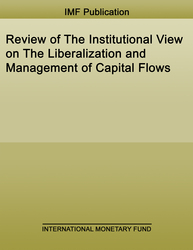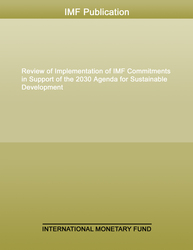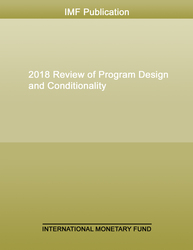
Review of The Institutional View on The Liberalization and Management of Capital Flows
The Institutional View (IV) on the Liberalization and Management of Capital Flows, adopted in 2012, provides the basis for consistent advice, and where relevant, assessments on policies related to capital flows.
READ MORE...
Volume/Issue:
Volume 2022
Issue 008
Publication date: March 2022
ISBN: 9798400204593
$5.00
Add to Cart by clicking price of the language and format you'd like to purchase
Available Languages and Formats
| English |
Prices in red indicate formats that are not yet available but are forthcoming.
Topics covered in this book
This title contains information about the following subjects.
Click on a subject if you would like to see other titles with the same subjects.
Exports and Imports , Finance , Money and Monetary Policy , Political Economy , debt inflow , maturity mismatch , IPF model , FX liability , inflow CFMs , Capital flow management , Capital flows , Institutional View on capital flows , Capital inflows , Global
Also of interest
Summary
The Institutional View (IV) on the Liberalization and Management of Capital Flows, adopted in 2012, provides the basis for consistent advice, and where relevant, assessments on policies related to capital flows. This paper reviews the IV, informed by advances in research, notably the work on an Integrated Policy Framework (IPF), the findings of the 2020 evaluation by the Independent Evaluation Office (IEO) on IMF Advice on Capital Flows, and staff’s experience with the implementation of the IV. The core premises and objectives of the IV remain unchanged. The IV rests on the premises that capital flows are desirable as they can bring substantial benefits for countries, and that capital flow management measures (CFMs) can be useful in certain circumstances but should not substitute for warranted macroeconomic adjustment. With those premises in mind, the IV aims to help countries reap the benefits of capital flows, while managing the associated risks in a way that preserves macroeconomic and financial stability and does not generate significant negative outward spillovers.
Copyright © 2010 - 2025
Powered by:
AIDC



